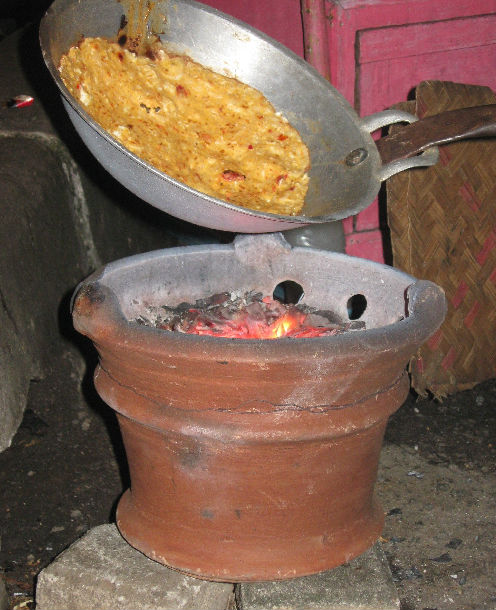The Kamado grill represents the pinnacle of culinary evolution, boasting a history that spans thousands of years. Its journey from ancient origins to modern-day acclaim underscores its role as a versatile and indispensable grilling tool. This exploration of the Kamado grill delves into its origins, transformation, and enduring appeal among cooking enthusiasts worldwide.
The Ancient Roots of Kamado Grilling: A Legacy from Asia
The Kamado grill's history begins over 3,000 years ago in ancient Asia. Its name, derived from the Japanese word for "stove" or "cooking range," hints at its cultural significance. The concept began in China with the Yan steamer, an innovative clay vessel that laid the groundwork for the Kamado's multifunctional design.
As the technology spread to Japan during the Kofun period (300–538 AD), the Kamado evolved into the mushikamado, primarily used for steaming rice. This period marked the advent of cooking with wood or charcoal, establishing a key feature of Kamado grills that persists to this day.
The Evolution of Kamado Grills in Japan
In Japan, the mushikamado underwent significant refinements. Domed lids and airflow controls were added, introducing features that define today’s Kamado grills. By the early 20th century, these innovations made the Kamado a household staple across Japan, celebrated for its heat retention and consistent cooking capabilities.
The ceramic or clay construction of traditional Kamado grills ensured excellent heat distribution and moisture retention. This allowed for slow, even cooking that imbued dishes with a rich, smoky flavor—a hallmark of Kamado grilling.
The Kamado Grill’s Journey to the West
The Kamado grill crossed international borders following World War II, when American servicemen stationed in Japan recognized its unique utility and brought it home. This marked the beginning of its rise in Western markets.
A turning point occurred in 1954, when Ed Fisher founded Big Green Egg, one of the first U.S. companies to commercialize Kamado grills. Fisher enhanced the traditional design with modern ceramic materials, improving durability and heat efficiency. The success of Big Green Egg paved the way for other brands like Kamado Joe, Primo Grills, and Vision Grills, which introduced Kamado cooking to a global audience.

Why Kamado Grills Are Highly Effective
Kamado grills are renowned for their superior heat retention and versatility. Made from thick ceramic or clay, they maintain a stable cooking environment that supports a wide range of techniques, from high-temperature searing to low-and-slow smoking.
The dual air vents, located at the top and bottom, provide precise temperature control. This design enables Kamado grills to achieve temperatures ranging from 200°F for smoking to over 700°F for searing. Additionally, the egg-shaped body promotes uniform airflow, creating a convection effect that ensures even cooking across the grill surface.
Modern Advancements in Kamado Grill Technology
While the fundamental design of Kamado grills has remained largely unchanged, modern innovations have elevated the grilling experience. Notable advancements include Kamado Joe's divide-and-conquer system, which allows users to cook different foods at varying temperatures simultaneously.
Other enhancements, such as heat deflector plates for indirect cooking, rotisseries for larger meats, and smart temperature controllers, add convenience and precision. Accessories like pizza stones, griddles, and wok attachments further extend the versatility of Kamado grills, making them a preferred choice for diverse culinary needs.
The Reasons Behind the Kamado Grill’s Popularity
Kamado grills have experienced a resurgence in popularity, driven by their exceptional performance and the enthusiastic community surrounding them. Key factors contributing to their widespread appeal include:
- Versatility: Capable of grilling, smoking, roasting, and baking, Kamado grills excel in both high-heat and low-temperature cooking techniques.
- Durability: Modern Kamado grills, constructed from high-quality ceramic, are built to last and can withstand year-round use.
- Flavor: The combination of charcoal and ceramic construction imparts a rich, smoky flavor that is difficult to replicate with other types of grills.
- Efficiency: Kamado grills require less charcoal than traditional models, making them cost-effective and environmentally friendly.
- Community: A passionate grilling culture has developed around Kamado grills, with enthusiasts sharing recipes, techniques, and experiences through online forums and competitions.

Conclusion: Kamado Grills – A Culinary Tradition That Endures
The Kamado grill’s rich history and exceptional functionality make it a standout tool in modern outdoor cooking. From its origins as an ancient clay vessel in Asia to its contemporary role as a high-tech cooking device, the Kamado grill has demonstrated unparalleled adaptability and appeal. With its ability to deliver superior heat retention, precise temperature control, and remarkable flavor, the Kamado grill remains a trusted companion for both seasoned grillers and newcomers. Its timeless design and modern innovations ensure it will continue to be a favorite for generations to come.
